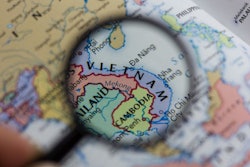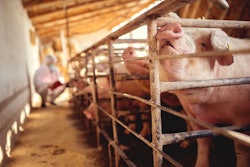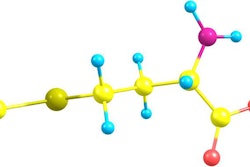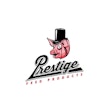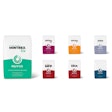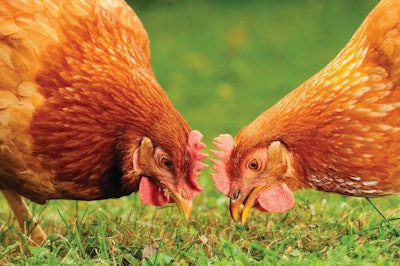
Sourcing alternative ingredients from different regions can help lower emissions on farms
More than 87% of emissions in layer production comes from feed, according to a research project by Promar International Ltd., commissioned by the British Free Range Egg Producers’ Association (BFREPA).
Most of those emissions are carbon dioxide, said Heather Webb, senior environmental consultant for Promar.
“That differs from other sectors within agriculture,” she said during a recent webinar. “We know livestock, so cattle and sheep and ruminants, emit mostly methane, and in the arable sector, cereal grain growers, they emit mostly nitrous oxide linked to use of nitrogen fertilizers.”
Because layer poultry diets typically contain 16% to 19% protein, much of which is sourced from soy, they can have a higher carbon footprint.
“Historically, soy meal has been imported to the U.K. from South American countries such as Argentina and Brazil and Paraguay, and importing product from those countries does attract a much, much higher carbon footprint,” Webb said.
Nine to 15 kilograms of emissions are generated for every kilogram of feed that is imported to the U.K. from those countries. However, soy imported to the U.K. from the United States has a much lower carbon footprint, she added.
One method for lowering emissions from a layer farm is by managing and monitoring protein levels in rations because protein contains a lot of nitrogen if the protein is not used by the bird.
“Making sure that we utilize protein in the ration as effectively as we can can help minimize losses and emissions,” Webb said.
In 2019, in the U.K., the government legislated a net zero target, she said. Additionally, the National Farmers Union has also published a net zero goal for 2040, as have several large U.K. retailers.
“That’s triggered a lot of action through all sectors of the economy as everybody is now required to decarbonize and transition to a low-carbon future, and agriculture is not immune to that,” Webb said.
Net zero encourages big emission reduction and allows for offset of emissions.
“Net zero doesn’t mean zero emissions, so there’s no expectation that agriculture or free-range egg production stops emitting greenhouse gases,” she said. “If we can remove the same amount of carbon from the atmosphere that we emit, we can balance our emissions, aiming for carbon neutrality and achieving net zero.”
Use of alternative proteins instead of soy, such as sunflower seed, insects, algae, and meat and bone meal, can lower emissions, but they are more expensive and some of them still face regulatory hurdles as well as processing challenges, said Martin Humphrey of Humphrey Feeds.
“Feed manufacturers are not the ‘bad men’ here and we don’t use soy just to annoy everyone,” he said. “We use it because it is the most effective and cost effective, nutritionally effective protein source that we can have in the diet.”
Additionally, he said, using different types of proteins can be challenging for feed mills because they may not have enough bins for every ingredient.
“If you’re trying to force in another new protein source, you would need another bin for that, but how much more do you want to pay?” he asked.

